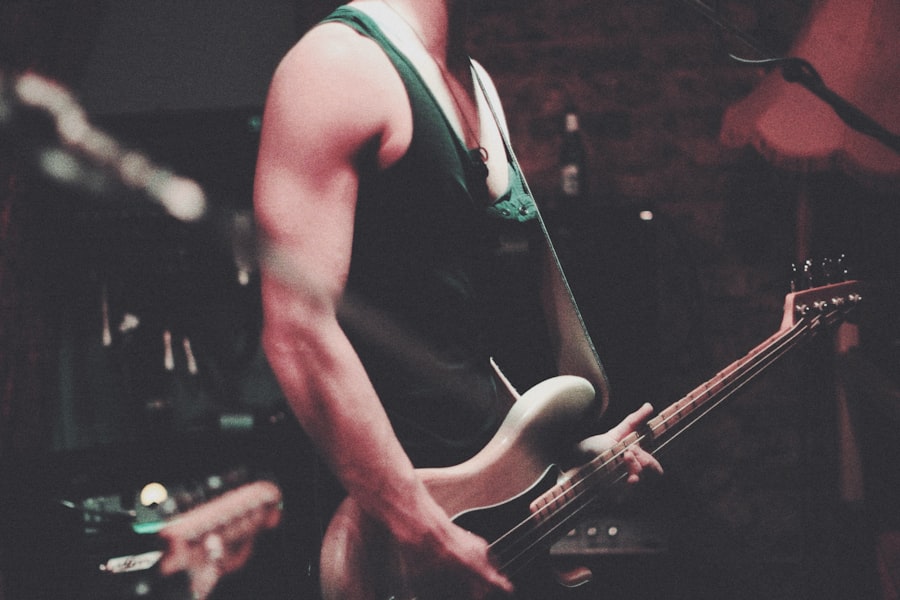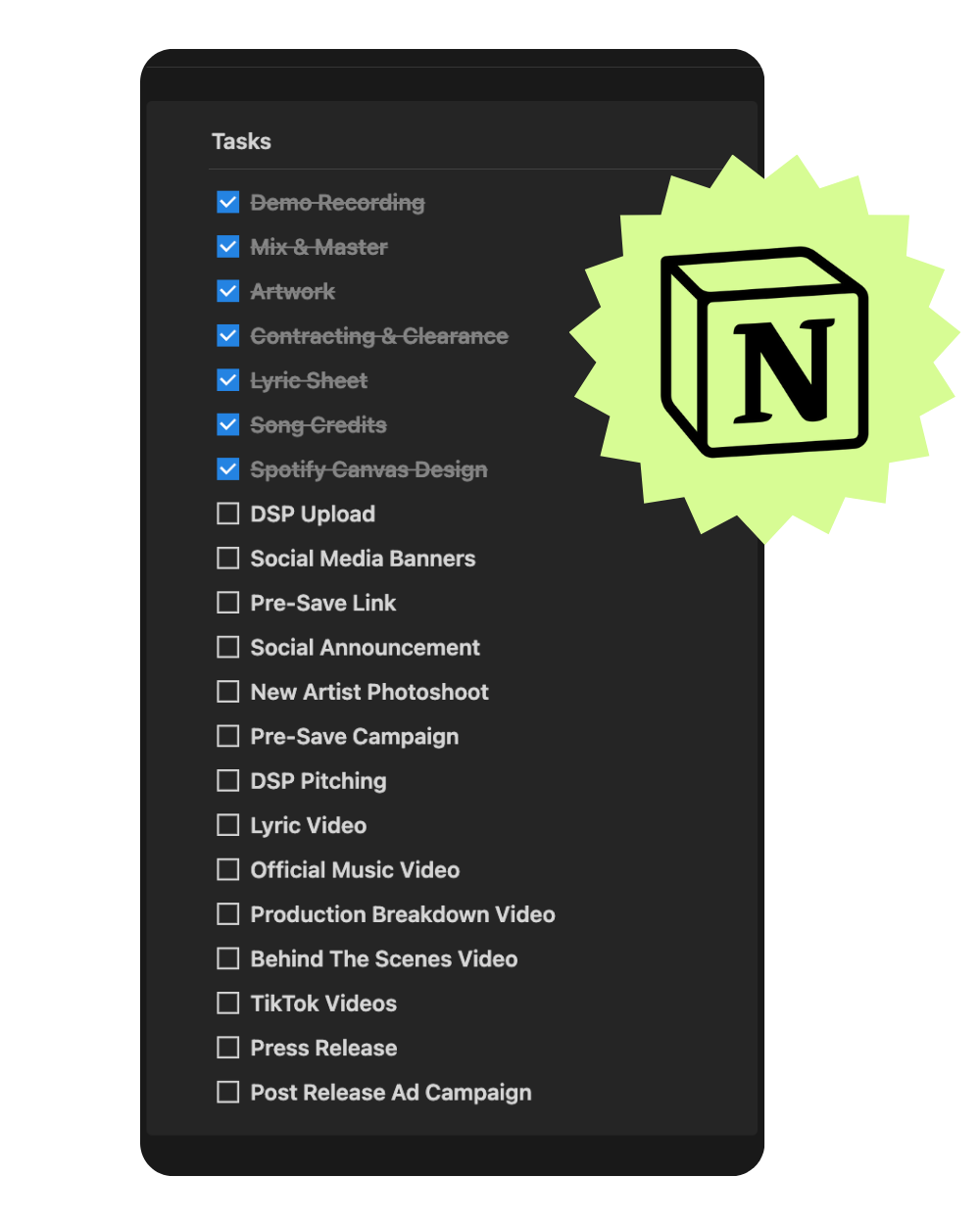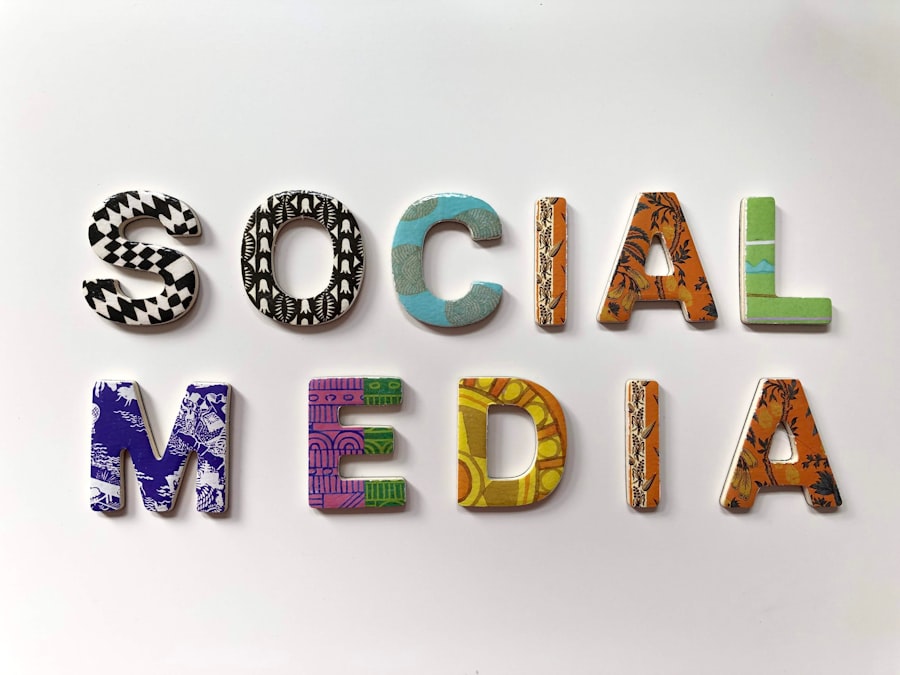Step 1? Learn how to promote music.
Welcome to the ultimate resource for independent artists seeking to elevate their music career in the ever-changing music landscape. This comprehensive music marketing blog is designed to equip emerging artists with the knowledge and strategies needed to effectively promote their music online and navigate the complex digital music industry. Whether you’re looking to create music that resonates with new fans or seeking innovative ways to market your music online, this guide will provide you with valuable insights and practical tips to boost your presence in the competitive world of independent music.
How can independent artists effectively promote their music online?
In today’s digital age, promoting your music online is crucial for independent artists looking to build a fanbase and advance their music career. The internet offers a plethora of opportunities for music promotion and marketing, allowing artists to reach a global audience without the backing of major labels, which is vital for independent artists focusing on music. To effectively promote music online, indie artists must leverage various digital marketing strategies and platforms, such as d4 music marketing, to maximize their visibility and connect with potential fans.
What are the best social media platforms for music promotion?
Social media marketing plays a pivotal role in music promotion for independent artists. Platforms like Instagram, Facebook, and Twitter offer excellent opportunities to showcase your music and engage with fans. However, in recent years, TikTok has emerged as a game-changer in the music industry, focusing on music discovery through its short-form content format. Many artists have found success by creating catchy, viral content on TikTok, leading to increased streams on platforms like Spotify and Apple Music. It’s essential for indie artists to maintain an active presence on these social media platforms, consistently sharing updates about new releases, behind-the-scenes content, and engaging with their audience to build a loyal fanbase.
How to create engaging content for music marketing?
Creating engaging content is key to successful music marketing. This involves more than just sharing your latest tracks; it’s about telling your story as an artist and giving fans a reason to connect with you on a personal level. Consider creating a mix of content types, such as behind-the-scenes footage of your music production process, live performance videos, and personal updates about your music career. Utilize tools like Instagram Stories or YouTube Shorts to share quick, engaging snippets that keep your audience interested. Remember, the goal is to create a consistent stream of content that reflects your brand as an artist and keeps your fans coming back for more.
What role does SEO play in music marketing for indie artists?
Search Engine Optimization (SEO) is a crucial aspect of music marketing that often gets overlooked by independent artists. Implementing effective SEO techniques can significantly increase your online visibility, making it easier for potential fans to discover your music and get your music heard. This involves optimizing your website, social media profiles, and content with relevant keywords related to your music genre and style. Creating a blog on your website where you regularly post about your music journey, new releases, and industry insights can also boost your SEO efforts. By focusing on SEO, you can improve your search rankings, making it more likely for your music to appear when people search for related terms online.
What strategies can help emerging independent artists get their music on Spotify playlists?
Spotify has become a crucial platform for music discovery, and getting your tracks featured on popular playlists can significantly boost your visibility and streams. However, with millions of tracks being uploaded to the platform, standing out can be challenging. To increase your chances of playlist inclusion, it’s essential to develop a comprehensive Spotify strategy that focuses on both algorithmic and editorial playlists.
How to optimize your Spotify for Artists profile?
Optimizing your Spotify for Artists profile is the first step in improving your chances of playlist inclusion. Ensure that your profile is complete with a high-quality artist photo, compelling bio, and links to your social media accounts. Regularly update your profile with new releases, tour dates, and other relevant information. Utilize the “Artist Pick” feature to highlight your latest release or a playlist you’ve curated. Additionally, encourage your fans to follow your profile on Spotify, as this can influence the platform’s algorithms and increase your chances of appearing in personalized playlists like Discover Weekly.
What are the most effective ways to pitch your music to playlist curators?
Pitching your music to playlist curators requires a strategic approach. Start by researching playlists that align with your music style and genre. Use Spotify’s built-in playlist submission tool to pitch your tracks to their editorial team at least a week before your release date. For independent playlist curators, it’s crucial to personalize your approach. Follow their submission guidelines carefully, and craft a concise, compelling pitch that highlights what makes your music unique. Building relationships with playlist curators can be beneficial in the long run, so consider engaging with them on social media and supporting their playlists even if your music isn’t included initially.
How important are user-generated playlists for music discovery?
While editorial and algorithmic playlists are often the focus for many artists, user-generated playlists play a significant role in music discovery on Spotify. These playlists, created by regular users, can have thousands of followers and offer a more organic way for listeners to discover new music through online music platforms. Encourage your fans to add your tracks to their personal playlists and share them with friends. You can also create your own playlists featuring your music alongside similar artists in your genre, which can help attract new listeners and potentially catch the attention of other playlist curators.
What are the latest music marketing trends for indie artists in 2025?
The music industry is constantly evolving, and staying up-to-date with the latest marketing trends is crucial for independent artists looking to make an impact. In 2023, several key trends are shaping the way artists promote and distribute their music, offering new opportunities for growth and fan engagement.
How can short-form content on platforms like TikTok boost music promotion?
Short-form content, particularly on platforms like TikTok, has become a powerful tool for music promotion. The platform’s algorithm-driven content discovery system allows for rapid viral growth, potentially exposing your music to millions of users. To leverage TikTok effectively, create catchy, engaging videos that showcase your music in creative ways. Participate in trending challenges or create your own to encourage user-generated content featuring your tracks. Remember that authenticity is key on TikTok, so don’t be afraid to show your personality and behind-the-scenes aspects of your music career.
What role do music blogs play in modern music marketing?
While social media and streaming platforms have taken center stage in music marketing, music blogs still play a significant role in the industry. Getting featured on reputable music blogs can lend credibility to your work and help you reach a dedicated audience of music enthusiasts. Many of these blogs, including the bandzoogle blog, have a strong online presence and can help boost your SEO efforts for marketing your music. When approaching music blogs, focus on those that align with your genre and have an engaged readership. Craft personalized pitches that highlight what makes your music unique and why it would be of interest to their readers.
How are streaming services changing the landscape of music marketing?
Streaming services continue to shape the music landscape, influencing how artists release and promote their music. The shift towards singles and EPs over full-length albums has become more pronounced, allowing for more frequent releases and sustained engagement with fans. Streaming platforms are also increasingly offering direct-to-fan features, such as Spotify’s Canvas and Marquee, which allow artists to promote their music within the platform. Additionally, the importance of playlist inclusion and algorithmic recommendations has led to a focus on data-driven marketing strategies, with artists using streaming analytics to inform their promotional efforts and target their most engaged listeners.
How can independent artists develop a successful music marketing strategy?
Developing a successful music marketing strategy is crucial for independent artists looking to make their mark in the industry. A well-planned approach can help you effectively promote your music, grow your fanbase, and achieve your career goals. Let’s explore the key components of an effective music marketing plan and how to set realistic goals for your music career.
What are the key components of an effective music marketing plan?
An effective music marketing plan should encompass various elements that work together to promote your music and build your brand. First, define your target audience and understand where they discover and consume music. This will help you focus your efforts on the most relevant platforms and marketing channels. Next, create a content calendar that outlines your release schedule, social media posts, and other promotional activities. Incorporate a mix of owned media (your website, email list), earned media (press coverage, playlist inclusions), and paid media (advertising, sponsored content) in your strategy. Don’t forget to include a budget allocation for various marketing activities and a timeline for achieving your marketing goals.
How to set realistic goals for your music career?
Setting realistic goals is essential for maintaining motivation and measuring progress in your music career. Start by defining both short-term and long-term objectives. Short-term goals might include reaching a certain number of streams on Spotify, growing your social media following, or booking a specific number of live shows. Long-term goals could involve signing with a label, embarking on a national tour, or achieving a certain level of income from your music. Make sure your goals are SMART: Specific, Measurable, Achievable, Relevant, and Time-bound. Regularly review and adjust your goals based on your progress and changes in the music landscape.
What tools and resources are essential for music marketing?
There are numerous tools and resources available to help independent artists with their music marketing efforts. Social media management tools like Hootsuite or Buffer can help you schedule and analyze your social media posts. Email marketing platforms such as Mailchimp allow you to build and engage with your fan base through newsletters, making it easier to get your music heard. For website creation and management, platforms like Bandzoogle offer music-specific features and integrations. Analytics tools provided by streaming services and social media platforms are invaluable for understanding your audience and measuring the success of your marketing efforts. Additionally, consider investing in digital audio workstations (DAWs) for music production and video editing software to create engaging visual content for your marketing campaigns.
What are the best music distribution options for independent artists?
Choosing the right music distribution method is crucial for independent artists looking to get their music onto major streaming platforms and digital stores. The landscape of music distribution has evolved significantly in recent years, offering artists more options and control over their releases, which is essential for marketing their music effectively. Let’s explore how to choose the right digital music distributor and the impact of distribution on your overall marketing efforts.
How to choose the right digital music distributor for your needs?
Selecting the appropriate digital music distributor requires careful consideration of several factors. First, evaluate the platforms they distribute to – ensure they cover all major streaming services and digital stores relevant to your target audience. Consider the pricing structure; some distributors charge a yearly fee, while others take a percentage of your royalties. Look for additional features such as pre-save campaigns, playlist pitching services, and detailed analytics. The speed of distribution and payout frequency are also important factors. Read reviews from other independent artists and compare the user interfaces of different platforms to find one that aligns with your needs and technical comfort level.
What are the pros and cons of different music distribution platforms?
Different music distribution platforms offer varying advantages and drawbacks. For instance, DistroKid is known for its affordable pricing and unlimited releases, but it may lack some of the advanced features offered by other distributors. CD Baby provides a comprehensive suite of services, including sync licensing opportunities, but charges per-release fees. TuneCore offers extensive analytics and marketing tools but has a higher annual fee structure. Some platforms, like AWAL, are more selective and offer label-like services but may take a higher percentage of royalties. Consider your budget, release frequency, and desired level of support when weighing these options.
How can music distribution impact your overall marketing efforts?
Your choice of music distributor can significantly influence your overall marketing strategy. Many modern distributors offer marketing tools and resources that can enhance your promotional efforts. For example, some provide pre-save links for upcoming releases, which can help build anticipation and boost your day-one streaming numbers. Others offer playlist pitching services, increasing your chances of playlist inclusion. The analytics provided by your distributor can inform your marketing decisions, helping you understand which tracks are performing well and where your listeners are located. Additionally, some distributors have partnerships with social media platforms, making it easier to use your music in content creation on these platforms, which can boost your visibility and engagement.
How can SEO techniques help musicians increase their online visibility?
Search Engine Optimization (SEO) is a powerful tool for musicians looking to increase their online visibility and attract new fans. By implementing effective SEO strategies, independent artists can improve their search engine rankings, making it easier for potential listeners to discover their music online. Let’s explore the most important SEO practices for musicians and how to optimize your online presence.
What are the most important SEO practices for musicians?
For musicians, key SEO practices include using relevant keywords in your website content, meta descriptions, and image alt tags. These keywords should relate to your music genre, style, and the topics you sing about. Creating high-quality, original content regularly, such as blog posts about your music journey or industry insights, can significantly boost your SEO efforts. Ensure your website has a clear structure with easily navigable pages and a mobile-friendly design. Building backlinks from reputable music websites and blogs can also improve your search engine rankings. Don’t forget to claim and optimize your Google My Business listing, especially if you perform live shows or offer music lessons.
How to optimize your website and social media profiles for better search rankings?
Optimizing your website for search engines involves several steps. Start by ensuring your site loads quickly and is easily navigable. Use descriptive, keyword-rich titles for your pages and include meta descriptions that accurately summarize the content. Incorporate your target keywords naturally throughout your website copy, including in headers and image descriptions, to enhance your online music presence. For social media profiles, use consistent branding across platforms and include relevant keywords in your bio and about sections. Link your social media profiles to your website and vice versa to create a cohesive online presence. Regularly update your profiles with fresh content to signal to search engines that your pages are active and relevant.
What role does content creation play in SEO for musicians?
Content creation is a crucial component of SEO for musicians, as it helps to get your music discovered online. By regularly producing high-quality, relevant content, you can improve your search engine rankings and provide value to your audience. Consider starting a blog on your website where you share updates about your music, behind-the-scenes content, or tips for aspiring musicians. Create video content for YouTube, which is the second largest search engine after Google. Transcribe your video content to create additional text for search engines to index. Develop a content calendar to ensure you’re consistently producing and sharing new material across your platforms. Remember to optimize all your content with relevant keywords and encourage engagement through comments and shares, as this can further boost your SEO efforts.
Q: How can the Bandzoogle blog help me as an independent artist?
A: The Bandzoogle blog is a comprehensive marketing resource for independent artists, offering expert advice on online music marketing, artist development, and industry news. It provides actionable tips to help you promote your music, grow your audience, and take your career to the next level in the ever-changing music industry.
Q: What are the best ways to get new fans for my music?
A: Some of the best ways to attract new fans include leveraging social media platforms, utilizing music discovery platforms, engaging in online marketing strategies, and creating compelling content. The blog offers numerous posts on music marketing techniques to help you grow your fanbase organically and build meaningful connections with your audience.
Q: How can I become successful on Patreon as a musician?
A: To be successful on Patreon, focus on offering exclusive content, engaging regularly with your patrons, and providing tiered rewards. The blog provides insights on how to create a compelling Patreon campaign, price your tiers effectively, and maintain a loyal supporter base to help you make a living from your music as an independent artist.
Q: What are some effective ways to promote my music in the current music industry?
A: Effective music promotion strategies include utilizing social media platforms, collaborating with other artists, submitting to playlists, engaging in email marketing, and leveraging music blogs and press. The blog offers in-depth guides on these topics, helping you navigate the complexities of the music industry and get your music heard by a wider audience.
Q: How can I make sure my music gets discovered on streaming platforms?
A: To increase your chances of discovery on streaming platforms, focus on creating high-quality music, optimizing your artist profile, utilizing platform-specific tools, and promoting your music on and off the platforms. The blog provides tips on how to make the most of various streaming services and increase your visibility to potential fans.
Q: What are some key aspects of artist development I should focus on?
A: Important aspects of artist development include honing your craft, defining your brand, building a strong online presence, networking within the industry, and continuously educating yourself about the music business. The blog offers resources and advice on each of these areas to help you grow as an artist and professional.
Q: How can I effectively use email marketing to connect with my fans?
A: Email marketing is one of the best ways to directly reach your fans. Focus on building a quality mailing list, creating engaging content, and maintaining a consistent sending schedule. The blog provides tips on how to craft compelling newsletters, grow your subscriber base, and use email marketing to drive engagement and sales for your music.
Q: What are some emerging music discovery platforms I should be aware of?
A: While major platforms like Spotify and Apple Music are crucial, keep an eye on emerging discovery platforms such as SoundCloud, Audiomack, and TikTok. The blog regularly updates information on new and trending platforms, helping you stay ahead of the curve and reach potential fans through various channels.
Q: How can I balance creating music and marketing myself as an independent artist?
A: Balancing music creation and marketing is crucial for independent artists. Set a schedule that allocates time for both activities, use productivity tools to streamline your marketing efforts, and consider outsourcing some tasks if possible. The blog offers advice on time management and efficiency to help you maintain your creative output while effectively promoting your work.
Q: What are some common mistakes to avoid in online music marketing?
A: Common mistakes in online music marketing include neglecting to build an email list, focusing solely on social media, ignoring analytics, and failing to engage with fans consistently. The blog provides insights on these pitfalls and offers strategies to create a well-rounded marketing approach that avoids these common errors and helps you connect more effectively with your audience.




























